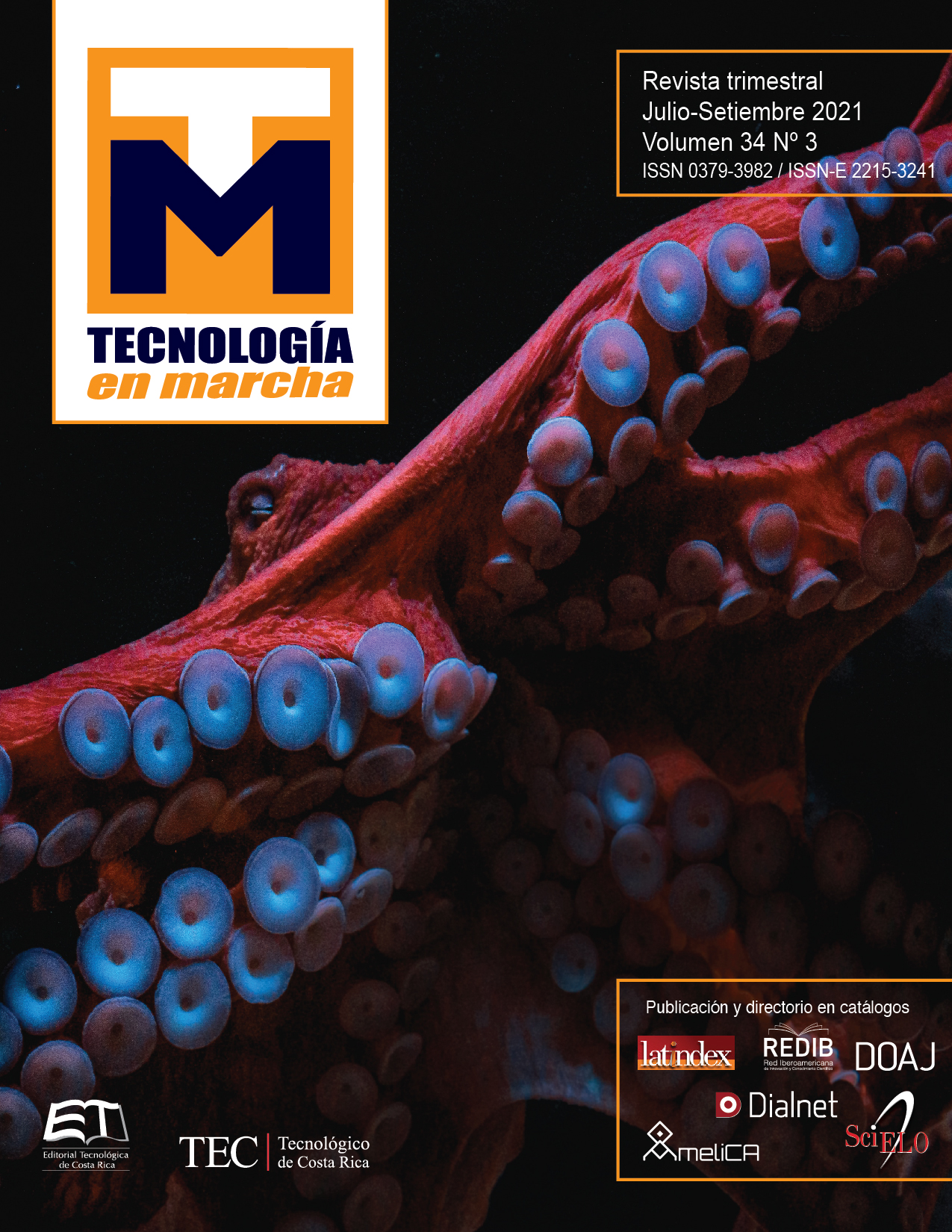Food loss assessment in micro, small and medium-sized agro-industrial enterprises
Main Article Content
Abstract
This research emerges from a growing concern to face the problem owing to food loss (FL), with the purpose to evaluate processes in agro-industrial product elaboration, focusing on the determination of food loss critical points (FLCP) to promote their further reduction. The research was carried out in a Costa Rican MSME (micro, small and medium-sized enterprise), dedicated to the processing of tropical fruits. The FL assessment proposed methodology enabled the establishment of a food loss valorization team (FLVT) for a multidisciplinary approach throughout the study, as well as a flowchart construction for the selected process (soursop pulping) and the identification and quantification of losses. The assessment of the food loss points (FLP) was performed using a matrix and a criticality index based on severity and probability of occurrence; which led to the identification of the critical points. As a result, four FLCP were detected; regarding the raw materials input, the pulping operation and the transference of processed pulps into containers. The case study shows that the applied methodology allows to determine FLCP in an MSME such as the studied, as a first action to identify and reduce food loss, improve efficiency and consider further waste management strategies.
Article Details

This work is licensed under a Creative Commons Attribution-NonCommercial-NoDerivatives 4.0 International License.
Los autores conservan los derechos de autor y ceden a la revista el derecho de la primera publicación y pueda editarlo, reproducirlo, distribuirlo, exhibirlo y comunicarlo en el país y en el extranjero mediante medios impresos y electrónicos. Asimismo, asumen el compromiso sobre cualquier litigio o reclamación relacionada con derechos de propiedad intelectual, exonerando de responsabilidad a la Editorial Tecnológica de Costa Rica. Además, se establece que los autores pueden realizar otros acuerdos contractuales independientes y adicionales para la distribución no exclusiva de la versión del artículo publicado en esta revista (p. ej., incluirlo en un repositorio institucional o publicarlo en un libro) siempre que indiquen claramente que el trabajo se publicó por primera vez en esta revista.
References
UNDP (United Nations Development Program). “Agenda de desarrollo post-2015”. In: https://www.cr.undp.org/content/costarica/es/home/post-2015/sdg-overview/ , 2019.
FAO (Food and Agriculture Organization of the United Nations). “The State of Food and Agriculture 2019. Moving forward on food loss and waste reduction”. Rome. Licence: CC BY-NC-SA 3.0 IGO, 2019.
UN (United Nations). “Transforming Our World: The 2030 Agenda for Sustainable Development. Obtenido de United Nations”. In: https://sustainabledevelopment.un.org/post2015/transformingourworld, 2015.
J. Gustavsson, J.C. Cederberg & U. Sonesson. “Global Food Losses and Food Waste: Extent, Causes and Prevention”, Study Conducted for the International Congress Save Food At Interpack 2011, [16–17 May], Düsseldorf, Germany Food and Agriculture Organization of the United Nations, Rome, 2015.
P.C. Nelson & E.D. Young. “Enhancement in the Marmoset Inferior Colliculus: Neural Correlates of Perceptual “Pop-Out”. In: E. Lopez-Poveda, A. Palmer, R. Meddis, Eds. The Neurophysiological Bases of Auditory Perception. Springer, New York, NY, 2010.
FAO (Food and Agriculture Organization of the United Nations). “Costa Rica mantiene tendencia a la disminución del hambre y la desnutrición”. Retrieved from: http://www.fao.org/costarica/noticias/detail-events/en/c/463756/ . 2017.
J. Aschemann, N. Raak, H. Rohm, C. Symmank & S. Zahn. “Processing- and product-related causes for food waste and implications for the food supply chain”. V 61. Waste Management, 2017, pp 461-472.
B. Ellison, M.K. Muth & E. Golan. “Opportunities and Challenges in Conducting Economic Research on Food Loss and Waste”. Applied Economic Perspectives and Policy 42 (1), 2019, pp 1-19.
C.E. Landry & T.A. Smith. “Demand for household food waste”. Applied Economic Perspectives and Policy 41 (1), 2019, pp 20–36.
R. Lozano, E. Papargyropoulou, J. Steinberger, Z. Ujang & N. Wright, N.. “The food waste hierarchy as a framework for the management of food surplus and food waste”. V 76. Journal of Cleaner Production, 2014, pp 106-115.
N. Wilson, R. Miao & C. Weis. “Seeing is not believing: perceptions of date labels over food and attributes”. Journal Food Products Marketing 24:5, 2018, pp 611-631.
P. Garrone, M. Melacini, A. Perego & S. Sert. “Reducing food waste in food manufacturing companies”. V 137. Journal of Cleaner Production, 2016, pp 1076-1085.
C. Hanson & P. Mitchell. “The business case for reducing food loss and waste”. A report on behalf of Champions 12.3. Retrieved from: http://www.wrap.org.uk/sites/files/wrap/Champions123_BusinessCase_Catering_0.pdf (accessed on 21 February, 2019).
FAO (Food and Agriculture Organization of the United Nations). “Boletín Pérdidas y Desperdicio de Alimentos en América Latina y el Caribe”. In: http://www.fao.org/3/a-i3942s.pdf . 2014.
A. Cartín, A. Villarreal & A. Morera. “Implementación del análisis de riesgo en la industria alimentaria mediante la metodología AMEF: enfoque práctico y conceptual”. Rev. Med. Vet. (27), 2014, pp 133-148.
Health Ministry. “Plan Nacional para la gestión integral de residuos 2016-2021”. San José, Costa Rica, 2016.
G. Wehenpohl, & C. Hernández. “Guía en la Elaboración de Planes Maestros para la Gestión Integral de los Residuos Sólidos Municipales”. México: Secretaría de Ecología del Gobierno del Estado de México, 2006, pp 78.
R. Govender. “A hazard analysis methodology for the South African abattoir hygiene”. British Food Journal, 116(12), 2014, pp 2026- 2047.

